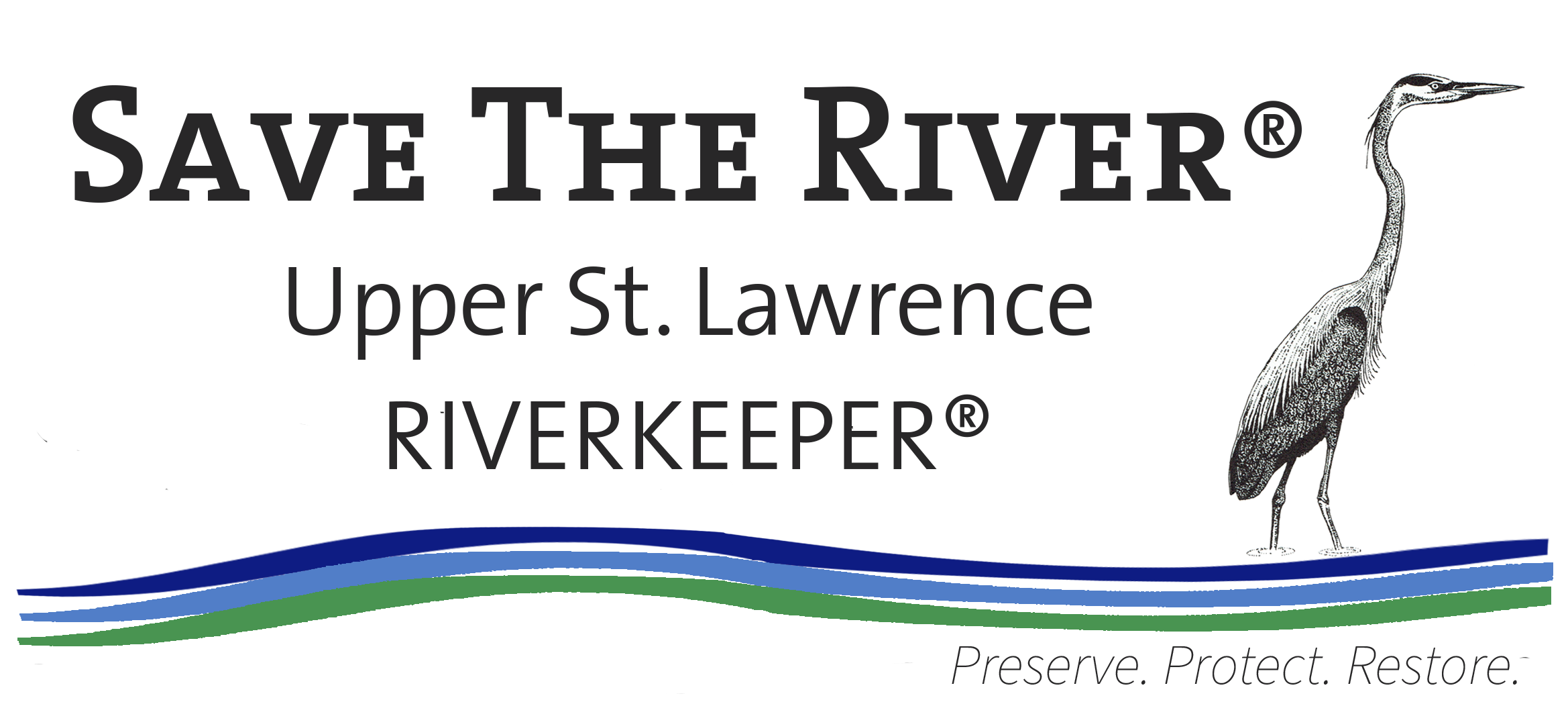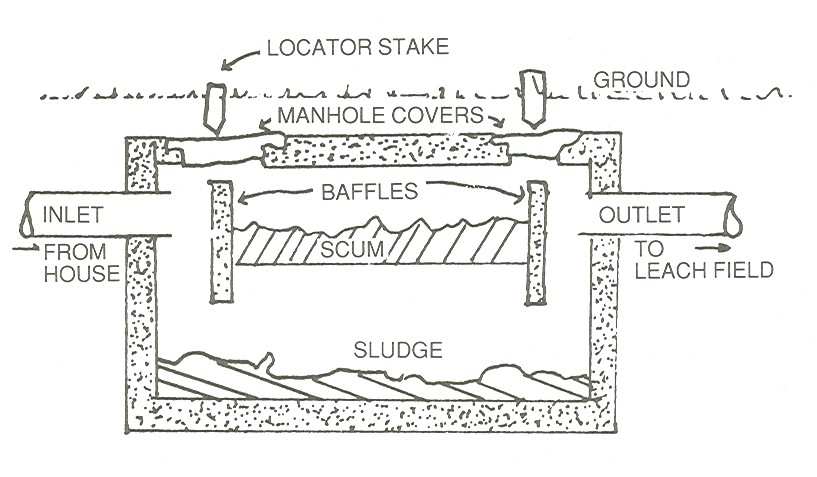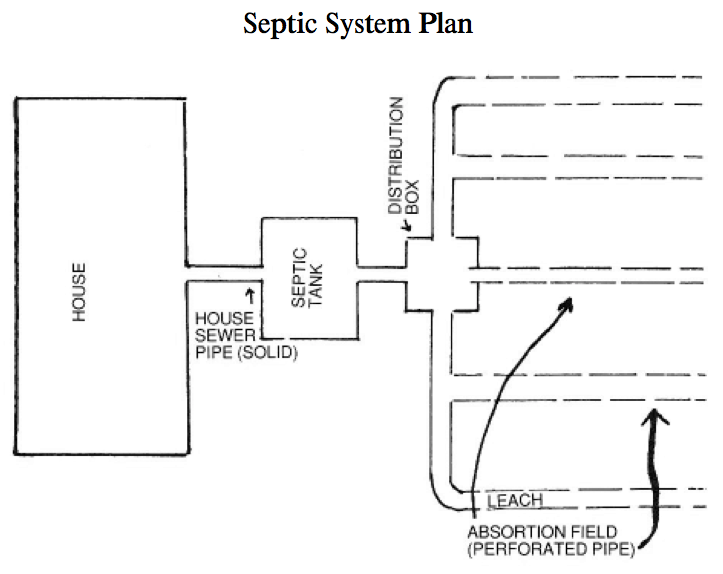In a septic tank system, wastewater is treated in two steps. In the first step the wastewater flows into a watertight tank, where heavier solids settle to the bottom while the lighter material floats; anaerobic bacterial decomposition of the sludge on the bottom then takes place. In the second step, the liquid wastes flow through an outlet at the top of the tank into some type of leach field. The leach field filters the effluent through the soil. If the septic tank is used without this filtration system it is considered direct discharge and the effluent may contain increased levels of bacteria, higher even than those in un- treated sewage.
The septic tank system is the most common on-site treatment device now in use for homeowners. Septic tanks do, however, require periodic inspection and pump out. Poor soil conditions in the 1000 Islands region can sometimes make location of a tank and leach field difficult and expensive.
Dishwashers, showers, toilets, etc., should not be added to existing septic tank systems until the tank is checked to make sure it is large enough to handle the additional wastewater load. Separate greywater systems can be designed to avoid this overload. For existing marginal systems, it is recommended that washing machines be diverted to a separate greywater system because they tend to clog leach fields and inhibit septic action. However, in new construction, the system should be adequately sized to handle greywater.
Minimum Septic Tank Capacities
| Number of Bedrooms | Tank Capacity (Gallons) |
| 1, 2 or 3 | 1,000 |
| 4 | 1,250 |
| 5 | 1,500 |
| 6 | 1,750 |
Septic Tank
Advantages: In some cases the septic tank system is the least costly sewage treatment method. It requires little maintenance. Treatment is highly effective and if maintained, highly reliable. The system has no moving parts.
Disadvantages: Performance depends on soil percolation rate, texture, structure, absence of high groundwater or bedrock areas, and owner maintenance, including regular inspection. Many areas of the 1000 Islands do not have the proper physical conditions for a septic tank or leach field, making installation very expensive. Lots must be large enough so that the tank is not located within 50 feet of wells or the river. Tanks and distribution systems are susceptible to clogging.
Operation and Maintenance: There will be few problems if the system is properly maintained and a non-corrodible material such as concrete or fiberglass is used for the tank. A seasonal tank should be inspected every five years, and pumped out when the depth of the scum crust and the bottom sludge is more than one-third of the total liquid depth. Pump out costs are dependent upon the location and company used, but getting together with nearby property owners who also need the service can reduce them. Care should be taken to maintain a lawn over the leach field and to prohibit driving or park- ing over the area.
It is recommended to install an effluent filter to remove fine suspended particles on the outlet end of the septic tank to reduce the potential for clogging the effluent treatment system.
Cost: For septic tank and leach field installation, the cost can range from $2,000 to $5,500 and up, depending on site conditions and installation difficulties.
In collaboration with:
Eric E. Murdock, P.E.



